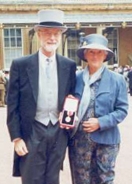 Sir Charles Hoare was a pioneer in computer science. He observed:
Sir Charles Hoare was a pioneer in computer science. He observed:
There are two methods in software design. One is to make the program so simple, there are obviously no errors. The other is to make it so complicated, there are no obvious errors.
This applies to logical arguments as well: you can make the argument so simple that there are obviously no errors. Or you can make it so complicated that there are no obvious errors.
A simple, straightforward argument for God’s existence might be, “Of course God exists. He’s sitting right over there!” Many arguments claim to be simple and straightforward—“the Bible is obviously correct” or “God obviously exists” for example—but are mere assertions rather than arguments backed with evidence.
Lots of apologetic arguments fall on the wrong side of this Hoare’s Dictum. The Transcendental Argument, for example, is often a five-minute dissertation about what grounds logic and whether a mind must exist to hold it.
The Ontological Argument goes like this. First we define “God” as the greatest possible being that we can imagine. Two: consider existence only in someone’s mind versus existence in reality—the latter is obviously greater. Three: since “God” must be the greatest possible being, he must exist in reality. If he didn’t, he wouldn’t meet his definition as the greatest possible being.
When hit with an argument like this for the first time, you’re left scratching your head, unsure what to conclude. These arguments are effective not because they’re correct (in fact, they fall apart under examination) but because they’re confusing.
The colloquial version of the argument is:
If you can’t dazzle ’em with brilliance, then baffle ’em with bullshit.
Photo credit: Microsoft
Related posts:
- See all the definitions in the Cross Examined Glossary.
Related links:
- “Hoare’s Dictum” has been defined in computer science as, “Premature optimization is the root of all evil,” so perhaps this use should be Hoare’s Second Dictum.
